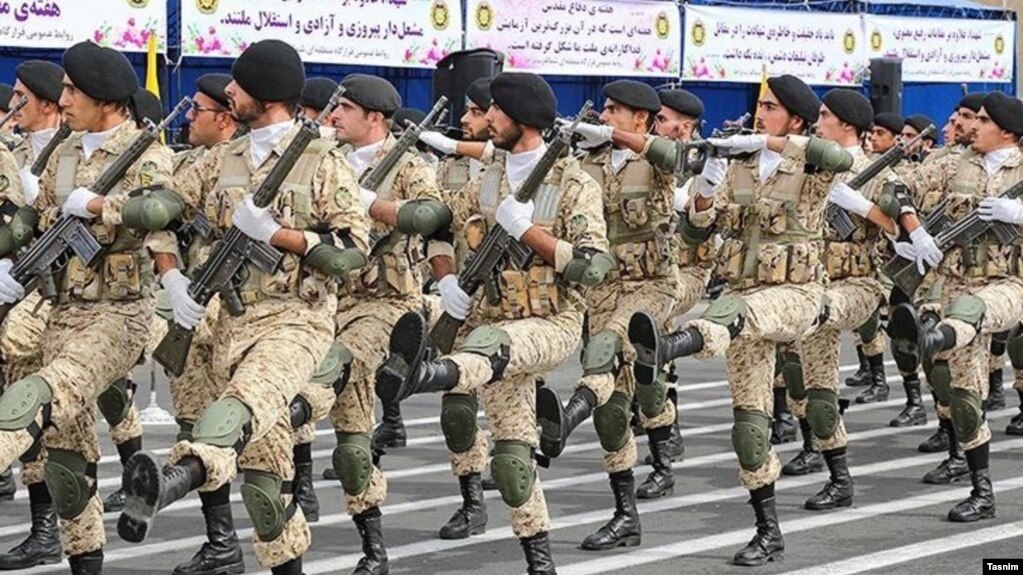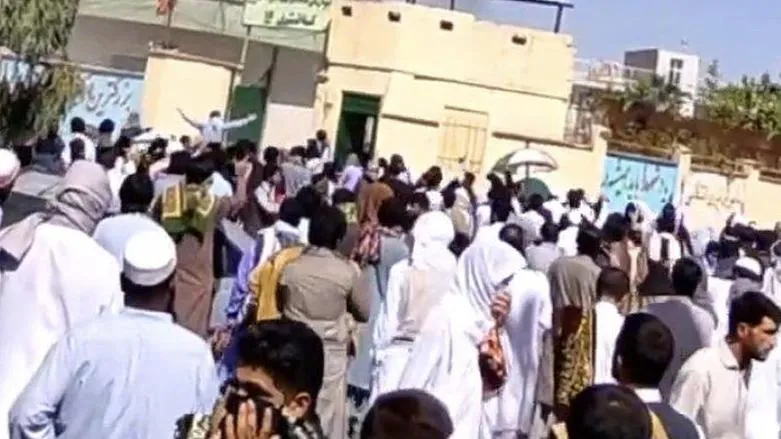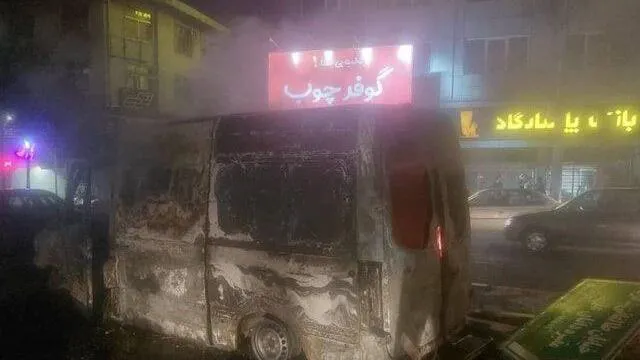
Why Is There a Loss of Public Trust?
The editorial of Mardomsalari argues that the Iranian people have lost trust in the government because their demands have been systematically overlooked.
Some say that the heads of the three branches of government have repeatedly assured that they will follow up on the death of Mahsa Amini, have talked to her family, and have issued strict orders in this regard; so, what else should they do for people to believe that they are seriously addressing the issue?
And that is right! There was a time when giving an assurance once was enough for people, but they have been deceived again and again, and now their experience tells them not to believe such promises.
For example, let us look at the past six months to see how people’s demands were ignored and their trust was eroded:
1.When Parliament Speaker Mohammad Bagher Ghalibaf was bragging about living a simple life, it was revealed that his wife and daughter had gone to Turkey for layette shopping. What happened when this was exposed? Did anyone make any apologies to the people? No! They apologized to Ghalibaf instead!
2.The price of rice, chicken, pasta, baguettes, etc. doubled overnight. While people could not even afford to make a simple pasta dish, some made strange claims such as people’s conditions were improving in Iran. And media outlets were told to write about “reforming the subsidies system” instead of “eliminating subsidies” on basic goods.
3.The Metropol Building collapsed in the city of Abadan and many people lost their loved ones. No one answered questions that were raised about the ties the owner of the building had with officials in the construction of the building. Who were the other parties involved in the shoddy construction of the building which led to the deaths of several people?? No explanations were given in this regard.
4.A videoclip was released showing a mother begging the morality police not to take her sick daughter with them. In response, the police vehicle almost ran her over and took her daughter. Following the strong public reaction to this incident, it was announced that the officers involved in the incident were rebuked. But the identities of the officers were never revealed.
5.Mir-Hossein Mousavi raised some questions about rumors of the Iranian supreme leader’s son succeeding him as the future leader of the country. Instead of answering these questions, they denounced Mir-Hossein Mousavi, calling him a traitor.
6.Then, Mahsa Amini was killed.
Impacts of Recent Protests on the Economy
The editorial of Etemad explains the consequences of the recent protests in Iran on the country’s economy, mainly focusing on the government blocking and filtering applications which are used for doing businesses like Instagram as well as on confiscating people’s property.
One of the aspects of the recent protests in Iran to which not much attention has been paid is their impacts on the country’s economy and welfare system. The increase in social and political unrest will decrease economic stability, and investors will hesitate to make investments in the country.
When 1 million business owners on Instagram with 40 million users are ignored and Instagram is blocked in Iran, it shows that the economy is not the main issue for the authorities and that their security policies are more important than the economy.
When the economy is not prioritized, any decision can be taken. Suddenly, it was announced that somebody’s villa might be confiscated just because he expressed his opinions about the ongoing protests. Now, this will send a signal to economic actors that they cannot count on stability in any sector in Iran.
In other countries where the economy is given priority, economic requirements will be seriously considered. But in Iran the most important applications, on which millions of Iranians’ businesses depend, are filtered and blocked, without taking into account what will happen to the owners of these businesses.
In today’s world, such approaches are not acceptable, because telecommunications technology has become an undeniable part of people’s lives and it is citizens’ inalienable right which cannot be ignored.
When without any judicial process, an order is issued for confiscating people’s properties, it means that private property has no meaning in Iran.
All these incidents make it difficult to make any predictions about Iran’s economy, increasing the risk in Iran’s economy. Those people who speak out regarding the state of Iran’s economy are forced to migrate to other countries where the economy is given greater priority.
It seems that in recent days, the economy and businesspeople in Iran have suffered the most damage, their demands do not seem to matter at all for political leaders.
Reviving the JCPOA and Miscalculation
The editorial of Arman Melli argues that the nuclear talks between Iran and the United States will be resumed under new circumstances, given the ongoing widespread popular protests in Iran and the congressional elections which will be held in the United States in November.
Until a few weeks ago, talks for reviving the nuclear deal (JCPOA) were moving forward and there was an expectation that both sides would reach an agreement in the near future and revive the JCPOA. But today there is no willingness on the Iranian side for reviving the JCPOA and resuming the negotiations.
Iran has made a mistake in its calculations, holding that the less flexibility it shows in the talks, the more concessions it will get. But it has not considered the factor of time.
So, now, these calculations have proved wrong, and given what has happened so far, it seems that the Americans are not willing to revive the JCPOA, and perhaps they might take an even tougher stance against Iran.
Given the atmosphere created in the United States by media outlets, neither the US administration nor Congress will come to the negotiating table. Of course, it should be mentioned that before the recent incidents and people holding widespread protests in Iran, it was clear that there would not be any negotiations until after the congressional elections in November in the United States, and the outcome will have direct impacts on the nuclear talks with Iran.
Of course, even before the US congressional elections, the nuclear talks were held under certain conditions. So, it should not be expected that after the US elections, talks will be resumed where they left off, as new talks will have their own requirements and conditions.
So, given the conditions in Iran and the US congressional elections that will be held on November 17, one cannot expect the nuclear talks to be resumed from where Iran wants. So, the outcome of any miscalculation will be losing an opportunity for reviving the JCPOA. And if the JCPOA is not restored, the other sides will move toward creating a global consensus against Iran and putting more pressure on the country.
IAEA, Iran, and Unresolved Issues
The editorial of Arman Melli, penned by Iran’s former ambassador to the UK, explains the problems that exist between Iran and the IAEA, urging that the recent trip of the head of Iran’s Atomic Energy Organization Mohammad Eslami to Vienna would be decisive in determining the issues that are going to be discussed between Iran and the IAEA.
IAEA Director General Rafael Grossi responded decisively to Iran’s declaration that the IAEA should close its investigation and drop the safeguards issue. Grossi stated that the IAEA will examine Iran’s case from a technical standpoint, and Iran must give proper responses to the IAEA in this regard. So, reviving the nuclear deal (JCPOA) has faced challenges, and there must be additional efforts in this regard.
Either Iran must give in to the IAEA’s demands and must accept the IAEA’s monitoring according to international standards, or there must be an agreement so that the IAEA accepts Iran’s responses as convincing and closes the investigation regarding Iran’s suspicious nuclear sites.
It seems that the IAEA and even its Board of Governors are under the influence of the United States and the major European countries. Iran’s problem with the IAEA is not confined to the agency’s questions regarding Iran’s three undeclared nuclear sites. There is also the question of activities that were recorded but have not been shared with the IAEA. Moreover, in reaction to the IAEA’s resolution against the country, Iran has turned off the IAEA’s cameras which monitor Iran’s nuclear activities and there are also some questions about several nuclear sites.
There are disagreements over these issues, while the IAEA and Iran have not been able to reach an understanding. Solutions will probably be found to resolve these issues. All this is just speculation. And in so far as the head of Iran’s Atomic Energy Organization Mohammad Eslami does not make clarifications about his trip to Vienna, all we can do is speculate on the possible negotiations between Iran and the IAEA.

Protests Continue in Iran; From Streets to Rooftops, From Universities to Schools, People Chant “Death to the Dictator”

One of the longest protest movements in Iran in the past 40 years has assumed new dimensions, despite the efforts of the Iranian authorities to contain it.
On Monday, Iranian Supreme Leader Ali Khamenei, after a long period of absence, appeared among the military forces and thanked Iranian security and law enforcement forces, calling the protesters “rioters.” Khamenei denounced the protesting women and youths as monarchists and separatists, calling for confrontation with them.
But many high school and university students have continued to protest this week.
According to images released on social media, schoolgirls first ripped out images of the current and former supreme leader, Khamenei and Khomeini, from their coursebooks, and then took to the streets without the hijab, marching and chanting, “Woman, life, freedom!”
University students also chanted slogans calling for the release of all detained students.
During the night protests, people chant “Death to the dictator” from the rooftops and balconies of their houses.
In the meantime, the internet shut down and restrictions on cyberspace continue, and in some regions, the internet connection is completely cut off.
Amnesty International issued a statement to condemn the persistent brutal crackdown in Iran, pointing to violent attacks and the arrest of university students all over the country, including Sharif University.
The organization emphasized that systemic impunity in Iran fuels such crimes, underscoring the need for states to set up an independent UN mechanism to investigate and ensure accountability for serious crimes under international law in Iran.
Widespread protests in Iran have been extensively covered by international media including The Wall Street Journal, The Guardian, USA Today, Toronto Star, The Times, The Independent, Le Figaro. They have devoted their opening pages to the protests in Iran, and while backing the protests in Iran, they have predicted the end of the Iranian political system.
Mir-Hossein Mousavi Calls for Armed Forces to Support Peoples’ Protests

As the national uprising of the Iranian people against the Iranian republic entered its third week and as the bloody crackdown against protestors by government forces continues, Mir-Hossein Mousavi, one of the leaders of the Green Movement who is under house arrest in Iran, issued a statement demanding that the Iranian armed forces stop oppressing the protesters and “stand on the side of truth and on the side of the nation.”
This statement which is addressed to the Iranian armed forces reads, “The power given to you is for defending people, not oppressing them; it is for protecting the oppressed, not serving the powerful and tyrants; it is for bringing peace for millions of people, particularly the destitute, and not for stabilizing the power of the authorities.”
Protests over the death of Mahsa Amini while in the custody of the so-called morality police have become anti-establishment, and according to human rights organizations’ statistics, so far more than 130 protesters have been killed.
Mousavi, one of the two leaders of the 2009 Green Movement, described Mahsa Amini as “the daughter of Iran, the daughter of Kurdistan, the daughter of mankind,” urging that “the blood of the oppressed is stronger than the force of the tyrants.” Under these sad, tragic circumstances, he added, “We must remind all armed forces of their covenant in protecting our land, Iran, as well as people’s lives, property, and rights.”
He underscored that Iranian men and women have risen in the name of Mahsa Amini, as well as to address hundreds of their forgotten demands.
Addressing the law-enforcement, security and armed forces, Mousavi has added that “no one is allowed to stand against the people and forget his covenant with the nation.”
Mousavi’s previous message was a warning about the leadership in Iran becoming hereditary, which provoked a strong reaction from the Iranian authorities.
“Bloody Friday” in Zahedan; Protesters Shot in the Head, Heart

Following severe clashes on Friday, September 30, in the city of Zahedan in Sistan and Balochistan Province, the official Telegram channel of the Sunni Friday prayer leader of Zahedan Molavi Abdul Hamid showed a video about this incident, calling it a “tragedy” and calling for the “punishment of those who killed people.”
Hamid stated that “most bullets were shot at the heads and hearts” of people and “it was clearly done by snipers.”
According to the Sunni Friday prayer leader of Zahedan, minutes after the Friday prayer was over, the sound of shooting could be heard. Later, it became clear that a number of youths had assembled in front of the police station and were chanting slogans and throwing stones toward the station.
Hamid added that special unit forces deployed to the police stations earlier started shooting at people directly, not just at the youths who had gathered in front of the police station, but also at people who had gathered to say their prayers.
He called this incident “a great injustice which is unique in its own way.”
According to the Baloch Activists Campaign, more than 80 people including two children were killed in the Friday shootings in Zahedan.
According to local sources, there were calls for holding an assembly in protest over the death of Mahsa Amini while the custody of the morality police, and also the “rape of a 15-year-old Baloch girl” by the law-enforcement chief in the city of Chabahar.
Iran Human Rights Organization has strongly condemned the killing of protesters in different cities of Iran, particularly the recent massacre in Zahedan, calling it a “crime against humanity.”
Widespread Protests: From “Child Soldiers” to Using Ambulances in Lieu of Military Vehicles

While popular protests over the death of Mahsa Amini have spread all over the county, Iranian security forces have turned to deploying “child soldiers” for oppressing protesters and using ambulances instead of military vehicles.
After protesters realized that Iranian government forces are using ambulances for security purposes, they have started targeting them, and a large number of ambulances have been destroyed during protests. The Iranian health minister had said earlier that more than 70 ambulances were attacked by “rioters” and the number is still increasing, claiming that the ambulances were taking the injured to hospital.
The health minister’s remarks were strongly condemned on social media, with users clarifying that ambulances and emergency vehicles were not being used to help the injured people.
Reports and released images of recent protests in Iranian cities show that Iranian military forces and special security units are using ambulances for transporting military forces and taking detained people to prisons.
In response to the security use of ambulances, 800 Iranian physicians signed a petition calling for the Medical Council of Iran to prevent the use of medical equipment and vehicles for purposes other than the treatment of patients.
According to civil activists, security forces also deploy ambulances for arresting protesters at their homes and workplaces.
In the meantime, in these protests, in addition to using ambulances which is in violation of international conventions, Iranian security forces have deployed children and adolescents for oppressing protesters.
Following the release of images of the deployment of children in oppressing protesters, 800 writers and children’s activists issued a statement warning about the ongoing violation of children’s rights in Iran.
The statement reads: “Putting a number of armed adolescents in military garb in front of protesters is a blatant example of the violation of children’s rights and their instrumental use; undoubtedly, this manner of treating adolescents will have severe and irreparable consequences for those who have ordered this.”
Releasing images of adolescents in military garb met with a barrage of criticism on social media, with some comparing it with what the Nazis did during World War II.
